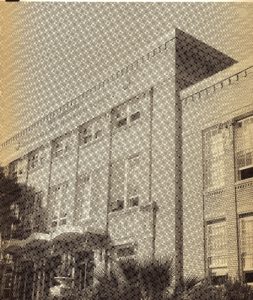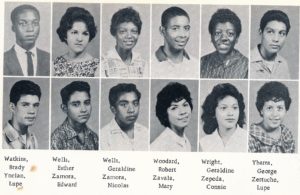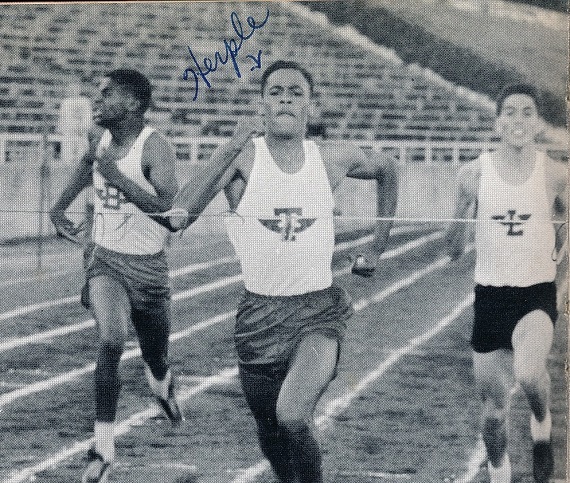By Ricardo Romo
A story that is not well known is how San Antonio Tech High School was a prime model of racial harmony and ethnic tolerance in the city during the years 1955-1965.
 In these years many southern cities experienced racial strife associated with the struggle by Black Americans to gain equality with other Americans. Conflict was the norm rather than the exception in the civil rights struggle made famous by Martin Luther King and thousands of his followers.
In these years many southern cities experienced racial strife associated with the struggle by Black Americans to gain equality with other Americans. Conflict was the norm rather than the exception in the civil rights struggle made famous by Martin Luther King and thousands of his followers.
We are familiar with images of police suppressing peaceful demonstrations with tear gas, at times sending vicious dogs to attack Black protesters in cities like Selma and Birmingham Alabama.
Tech High School is well known because it was the first high school in the city. Tech opened its doors in 1882 under the name San Antonio High School. When my dad graduated from Tech in 1940, it was called San Antonio Vocational and Technical School.
After World War II Tech began to change demographically. As white families moved to the suburbs and the northside in the late 1940s and 1950s, few Anglo students attended Tech.
 While the Brown vs. Board of Education U.S. Supreme
While the Brown vs. Board of Education U.S. Supreme  Court decision in 1954 outlawed racial segregation in the U.S. public schools, Jim Crow laws which denied Blacks the rights to eat in restaurants and sit with Latinos and Whites at football games and movie theaters, persisted until the passage of the 1965 Civil Rights Act.
Court decision in 1954 outlawed racial segregation in the U.S. public schools, Jim Crow laws which denied Blacks the rights to eat in restaurants and sit with Latinos and Whites at football games and movie theaters, persisted until the passage of the 1965 Civil Rights Act.
San Antonio Tech High School opened its doors to Black students in 1954, nearly a decade before most Southern school districts had permitted such a practice. At Tech, Black students sat with Latino and White students in the classrooms, in the cafeteria, and in football and basketball arenas.
The peaceful integration of Tech High School was consistent with the efforts of Black religious leaders, city officials, and the military to make San Antonio a model city for racial harmony.
Many San Antonio schools, including Tech were among the first in the American South to fully integrate. Sometime after 1955 African Americans began to enroll at Tech. Tech students proved to the state and nation that Black, Latino, and White students could learn side by side in the same classroom. The Tech classes of 1955–1965 did their part in erasing the city’s racial divide. Tech H.S. taught me much about racial harmony. Growing up in the Westside I had limited opportunities to interact with African Americans. My elementary school was 100 percent Mexican American. Lanier H.S., which was in my neighborhood, was also 100 percent Mexican American. Thankfully, my parents taught me to respect others and made it clear that they considered racial bias and prejudice wrong.
Tech in the 1955-1965 era was unique in that Tech High School was one of the few schools that Blacks choose to enroll in. I was fortunate to witness a successful social experiment–that of racial integration. This experiment served as an important lesson for my education and for my coming of age. At Tech I learned that diversity made us better.
Tech’s central location in downtown San Antonio also contributed to our better understanding of the world around us. The Anglo, Latino, Black, and Asian shops and restaurants downtown gave us an appreciation and taste of the city’s rich diversity. Almost none of the Tech students lived near the school, therefore there were a dozen residential corridors represented at Tech High.
Most students who attended Tech used public bus transportation. I took the Buena Vista bus in the mornings and left in the afternoons via the Guadalupe bus. The morning bus left us downtown and it was there that we returned after school to catch our bus home.
In the 1950s and 1960s downtown was where all the action was. It was also the place where much of the commercial segregation occurred and where the majority of desegregation protests took place. All of the downtown theaters practiced segregation. For example, Blacks were not allowed to sit with White patrons on the first floor of the Majestic and Aztec theaters. They were required to enter both theaters through a back door in the alley and sit in their own separated section in the balcony.
In 1960 several Tech students, including my friend Joley Mason, a member of our basketball team, stood
with others in front of the Aztec Theater to protest segregation. I worked after school, so I only joined them on a few occasions, but the experience made me more aware of the inequities that persisted in our U.S. society.
Segregation became unlawful with the passage of the Civil Rights Act of 1965. I truly believe that we are a better city because of the earlier efforts of students from Tech High who did their part to promote equality and fairness.
Ricardo Romo









